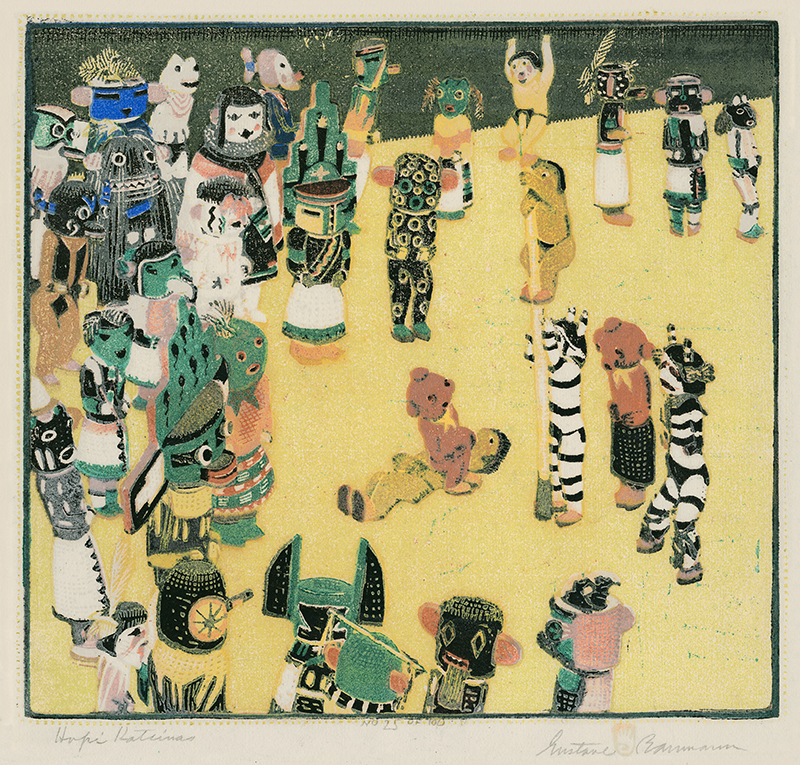
19th, 20th & 21st Century Fine Prints
707-546-7352 · fax 707-546-7924 · web: www.annexgalleries.com · email: artannex@aol.com
Hopi Katcinas by Gustave Baumann

Hopi Katcinas
Gustave Baumann
Hopi Katcinas
Gustave Baumann
1881 - 1971 (biography)For the composition of this woodcut Gustave Baumann created a Southwestern fantasy, a gathering of Hopi Katcinas (Kachinas), all with their telltale characteristics and colors. Kachinas (or katsinas) are actually stylized religious icons, meticulously carved from cottonwood root and painted to represent figures from Hopi history and mythology. After moving to the Southwest Baumann rarely used figurative elements in his work, this being one of the exceptions.
Standing about 8 to 10 inches tall, kachinas are created to instruct young women about katsinam, the immortal beings that bring rain, control other aspects of the natural world and society, and act as messengers between humans and the spirit world. They can represent deities, animals or ancestors and are passed on through the female lineage.
Edward Kennard, co-author of Hopi Kachinas, says concerning the purpose of the kachina figure, "Essentially it is a means of education; it is a gift at dance-time; it is a decorative article for the home, but above all it is a constant reminder of the Kachinas."
Baumann used his own kachina collection as models. They can be seen on an upper shelf around a hallway in his home in photographs. Baumann's collection of kachinas is now in the Museum of Indian Arts & Culture in Santa Fe, New Mexico. This image was illustrated in El Palacio, Spring 1981, volume 87, No.1.
